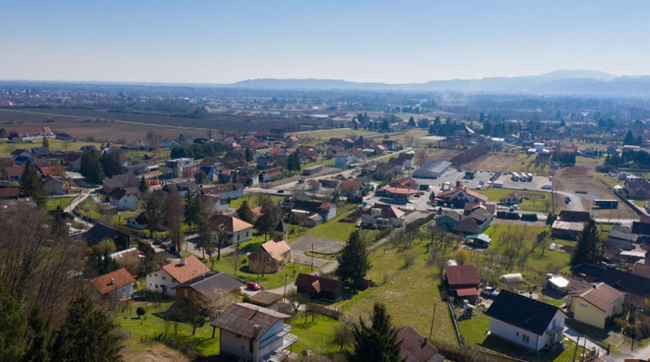
SUSTAINABLE RESOURCE MANAGEMENT FOR ENERGY IN BRDOVEC, CROATIA
Croatia, Rural area, Biomass/ Bioenergy, Geothermal Energy, Solar Energy, Smart Grid & V2G
Overview
Brdovec is a municipality in Zagreb County, measuring 37.6 km2 – the county’s largest municipality. Municipality of Brdovec has signed the EU Covenant of Mayors initiative on November 15th, 2011. Municipality of Brdovec has prepared a Sustainable Energy Action Plan (SEAP) as a part of the Covenant of Mayors initiative and it was official approved by the Municipality council on November 13th, 2012. Currently facing the challenges to provide new boost to the local energy transition, the Municipality collaborated with researchers, using the PRISMI approach to analyse potential pathways for the new SECAP and energy transition.The local energy system was modelled with hourly operation scenarios, considering three scenarios of development until year 2050: LowRES (no measures to be implemented), RES (only private initiatives in line with national strategies) and HighRES (using all local opportunities). The analysis reveals a substantial difference between the RES and HighRES approaches. The RES scenario, with minimal investment, focusing on easily achievable renewable energy goals, would achieve relatively modest results, while the HighRES scenario, aiming for a fully renewable energy system, has been proven to be possible. Modelling results show the municipality's significant potential for renewable energy generation, particularly from solar photovoltaics (PVs), and highlights the role of a biomass power plant in balancing the energy system under high renewable penetration. There is also high local potential of geothermal energy. In addition, it is important to note that vehicle-to-grid (V2G) technology provides significant balancing capabilities for the energy system.
To achieve the HighRES scenario, the municipality should strive to increase integration of locally available renewable energy sources (specifically solar, biomass and geothermal energy), as well as ways to achieve it. Also, the need to shift to sustainable mobility in order to reduce the emissions to zero has been analysed underlining that Electric Vehicles (EVs) represent an interesting opportunity since they could also support the energy system through flexible services that could avoid the need for large energy storage systems. As far as the heating sector is concerned, heat pumps and Solar thermal collectors represent viable solutions that should be analysed on a case-by-case basis. Such energy transition can lead the considered Municipality towards the sustainable and energy self-sufficient city concept and create new local job opportunities, putting the end-users in the center of energy transition.
a)
b)
Figure 1 Monthly representation of technologies contributing to the power supply in a) RES2050 and b) HighRES2050 scenario, with import representing the necessary additional energy that would be imported from the national grid (case study area is grid-connected)
Socio-economic feasibility analysis
Scenarios are compared in terms of the investment in power generation technologies and storage technologies. In this case, payback of storage is also viewed as part of the decarbonization of transport (as V2G is used). Newly generated jobs on the local level were also evaluated as a part of the social benefits of the transition, and such opportunities are only associated with the HighRES scenario, which brings significant employment, with 2.5 full time jobs in operation and maintenance by 2030 and 29 additional full-time jobs by 2050, because of significant employment in biomass and geothermal facilities.
Macro objective:
Macro objective:
- Demonstrate the feasible integrated energy system for a rural community, based 100% on locally available renewable energy sources
Specific objectives:
- Use locally available renewable energy
- Decarbonize sectors of energy demand
- Provide socio-economically sound options for the development of a rural community
Impacts that could be achieved by 2030:
- CO2 emissions reduced by 18.765 kt per year
- New RES generation units installed: 90% of public buildings available for PV, Ground based PV of 5 MW, 5 MW of biomass power plant and 2 MW of geothermal power plant
- Facilitate local employment on RES projects: 29 jobs in RES installations and maintenance
Technical transferring partner in the PRISMI PLUS project




